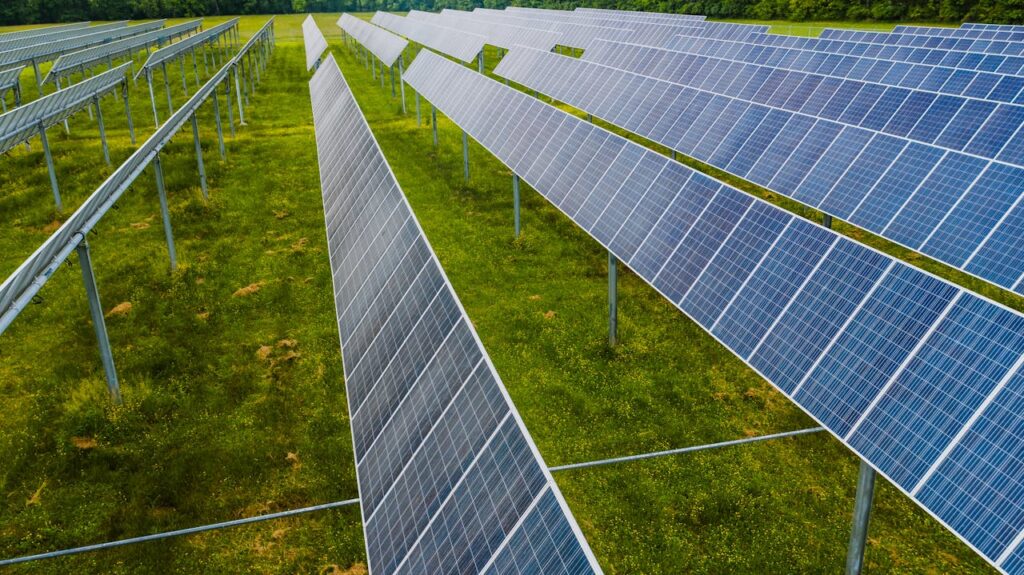How Do Solar Panels Work Infographic
![HOW DO SOLAR PANELS WORK [INFOGRAPHIC]](https://pvrecycling.co.uk/wp-content/uploads/2024/07/HOW-DO-SOLAR-PANELS-WORK-INFOGRAPHIC-768x1920.png)
Solar energy is revolutionising the way we power our world. As more businesses and households adopt this clean and renewable energy source, understanding how solar panels work becomes increasingly important.
At PV Recycling, we are committed to promoting sustainable practices, including the collection and recycling of solar panel waste. In this article, we will explore the fascinating process of how solar panels work and the benefits they offer.
Harnessing the Power of the Sun
Solar panels, also known as photovoltaic (PV) panels, convert sunlight into electricity. This process is both innovative and environmentally friendly, providing a renewable energy source that reduces reliance on fossil fuels and decreases greenhouse gas emissions. But how exactly do solar panels turn sunlight into usable electricity?
Understanding Solar Panels
Solar panels are made up of numerous small units called photovoltaic (PV) cells. These cells are the key components responsible for converting sunlight into electricity. Each PV cell consists of layers of semiconductor materials, typically silicon, that generate electrical charges when exposed to sunlight.
Step-by-Step: From Sunlight to Electricity
- Sunlight Hits the Solar Panels: Solar panels are strategically installed to capture the maximum amount of sunlight. When sunlight strikes the panels, the PV cells absorb the light energy.
- The Photovoltaic Effect: The absorbed sunlight knocks electrons loose from the atoms within the PV cells, creating a flow of electrons. This phenomenon is known as the photovoltaic effect.
- Direct Current (DC) Generation The movement of these electrons generates direct current (DC) electricity. DC electricity flows in one direction and is the initial form of electricity produced by the solar panels.
- Inverter Converts DC to AC Since most homes and businesses use alternating current (AC) electricity, the DC electricity generated by the solar panels needs to be converted. An inverter performs this conversion, turning DC electricity into AC electricity.
- Electricity Flows to Your Home or Grid Once converted, the AC electricity is sent to your electrical panel, where it can power your appliances and devices. Excess electricity can be fed back into the grid, often earning you credits or payments through schemes like the UK’s Smart Export Guarantee (SEG).
Benefits of Solar Energy
Adopting solar energy offers numerous benefits:
- Renewable: Solar energy is an inexhaustible resource.
- Clean: It produces no greenhouse gas emissions, helping to combat climate change.
- Cost-Effective: Solar panels can significantly reduce electricity bills.
- Low Maintenance: Solar panel systems require minimal maintenance over their lifespan.
Start Your Solar Journey
If you’re interested in transitioning to solar energy, here are some steps to get you started:
- Assess Your Home’s Solar Potential: Determine if your location and roof structure are suitable for solar panels.
- Contact a Solar Provider: Reach out to a reputable solar energy provider for a consultation.
- Get a Quote and Consultation: Receive a detailed quote and plan tailored to your energy needs.
- Install Your Solar Panels: Once you agree on the plan, your solar panels will be professionally installed.
Your Partner in Solar Sustainability
At PV Recycling, we are dedicated to supporting businesses with large volumes of solar panel waste. We provide comprehensive collection and recycling services to ensure that end-of-life solar panels are processed in an environmentally responsible manner. Our services help businesses comply with regulations, reduce waste, and contribute to a sustainable future.

